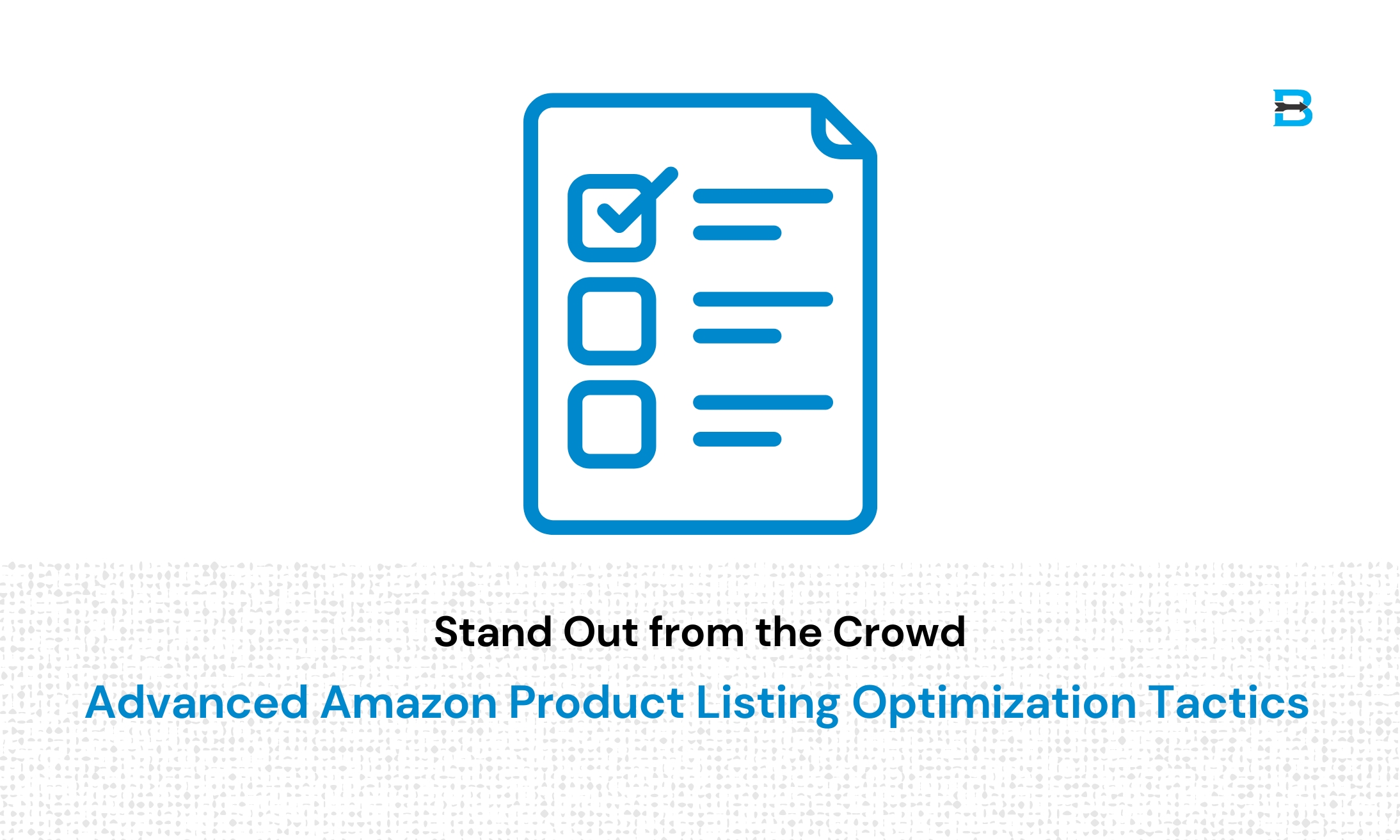Stand Out from the Crowd: Advanced Amazon Product Listing Optimization Tactics
Amazon, the e-commerce giant, is a competitive battleground for sellers looking to maximize their profits. To succeed, it is crucial to differentiate yourself from the competition and make your product listings stand out. This is where Amazon Product Listing Optimization comes into play.
In this comprehensive guide, we will walk you through advanced tactics to optimize your product listings, making them more visible and appealing to potential customers. Let’s dive into these expert tips to propel your sales to new heights!
Section 1: Understanding Amazon's A9 Algorithm
1.1. Importance of the A9 Algorithm
Amazon’s A9 Algorithm is the backbone of its search engine, determining how products are ranked in the search results. It is designed to provide the best possible shopping experience for customers by prioritizing relevant, high-quality product listings.
Understanding the factors influencing the A9 Algorithm is key to optimizing your product listings for better visibility and higher conversions.
1.2. Factors Affecting the A9 Algorithm
Some of the primary factors that influence the A9 Algorithm include:
Relevance: This pertains to how well your product listing matches the search query. Using relevant keywords throughout your listing can improve your relevance score.
Conversion Rate: This is the percentage of customers who make a purchase after viewing your product listing. High-quality images, detailed descriptions, and positive reviews can improve your conversion rate.
Customer Satisfaction: Amazon prioritizes listings with high customer satisfaction ratings. Factors affecting customer satisfaction include order defect rate, shipping time, and product quality.
Section 2: Advanced Keyword Research Techniques
2.1. Long-tail Keywords
Long-tail keywords are longer, more specific phrases that are less competitive but can generate a higher conversion rate. Focus on incorporating long-tail keywords into your product listings to attract niche customers and improve your search rankings.
2.2. Competitor Analysis
Analyzing your competitors’ listings can help you uncover valuable keywords you may not have considered. Use tools like Helium 10, Jungle Scout, or AMZScout to analyze competitor listings and extract high-performing keywords.
2.3. Amazon Auto-Suggest
Leverage Amazon’s auto-suggest feature by typing your primary keyword into the search bar and taking note of the suggestions provided. These suggestions can help you identify popular search terms and keyword variations that you can incorporate into your listings.
Section 3: Optimizing Listing Components
3.1. Title
Make your title informative and engaging by using relevant keywords and mentioning key features.
Follow Amazon’s title formatting guidelines for your product category.
Avoid keyword stuffing, as it can negatively impact the customer experience and your search ranking.
3.2. Bullet Points
Use bullet points to highlight your product’s unique selling points, benefits, and features.
Incorporate high-performing keywords while keeping the content engaging and easy to read.
Avoid duplicating information from the product description.
3.3. Product Description
Craft a compelling narrative that emphasizes your product’s benefits, uses, and features.
Use keywords naturally, focusing on readability and customer engagement.
Incorporate HTML formatting, such as bold text and bullet points, to improve readability.
3.4. Backend Keywords
Use Amazon’s backend keyword section to target additional relevant keywords without affecting your listing’s aesthetics.
Prioritize high-performing, long-tail keywords.
Avoid using duplicate keywords, as it does not improve your ranking.
3.5. Images
Provide high-quality images that showcase your product from multiple angles.
Include images that demonstrate your product’s uses and benefits.
Follow Amazon’s image guidelines to ensure your images are compliant and optimized for maximum visibility.
3.6. Enhanced Brand Content (EBC)
Utilize EBC (also known as A+ Content) if you are a registered brand on Amazon to create a visually appealing and informative product listing.
Combine high-quality images, infographics, and text to showcase your product’s features, benefits, and story.
EBC can help increase conversion rates, enhance customer trust, and improve your search rankings.
Section 4: Utilizing Customer Reviews and Q&A
4.1. Encouraging Customer Reviews
Send follow-up emails to customers, thanking them for their purchase and encouraging them to leave a review.
Offer excellent customer service to increase the likelihood of receiving positive reviews.
Ensure your product meets or exceeds customer expectations to avoid negative reviews.
4.2. Responding to Reviews
Address negative reviews promptly, offering solutions to resolve any issues the customer may have faced.
Thank customers for their positive reviews, further showcasing your commitment to customer satisfaction.
4.3. Utilizing the Q&A Section
Monitor your product’s Q&A section to answer customer questions quickly and accurately.
Utilize questions and answers to identify potential improvements to your product listing, such as adding more information or clarifying product features.
Section 5: Tracking and Analyzing Performance
5.1. Utilizing Amazon's Reports
Monitor your product listing’s performance using Amazon’s built-in reporting tools, such as Business Reports and Brand Analytics.
Identify trends and areas of improvement to optimize your product listings further.
5.2. Third-Party Tools
Use third-party tools like Sellics, Helium 10, or SellerApp to track keyword rankings, sales data, and listing performance.
Leverage these tools to identify opportunities for optimization and growth.
5.3. A/B Testing
Test different listing elements, such as titles, images, or bullet points, to determine which variations perform better.
Implement the winning variations to continuously improve your product listings and overall performance.
Conclusion
Optimizing your Amazon product listings is an ongoing process that requires constant monitoring, analysis, and refinement. Implementing advanced tactics can help you stand out from the competition and maximize your sales.
As a seller, you may want to consider partnering with a professional service provider like BUYMARG for your Amazon Product Listing Optimization needs. With their expertise, you can focus on growing your business while ensuring your listings are always at their best.







Leave a Reply
You must be logged in to post a comment.